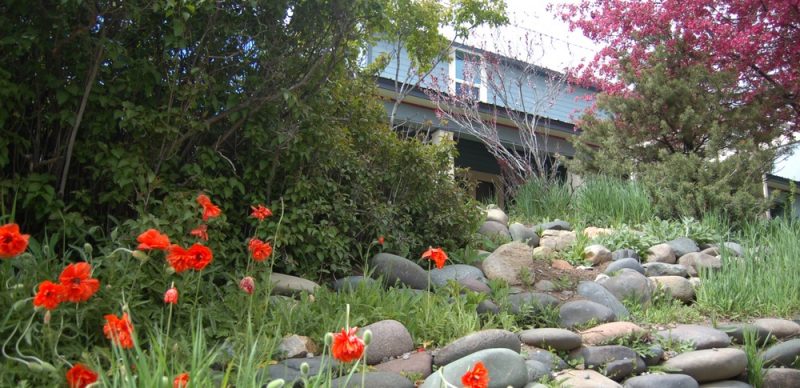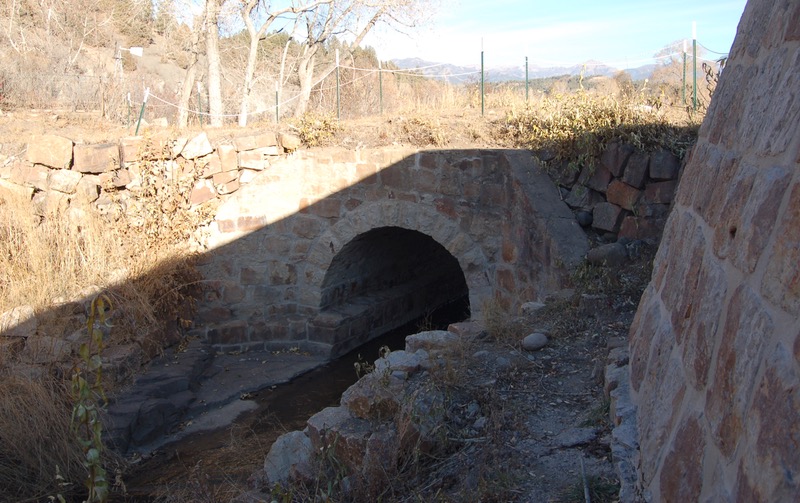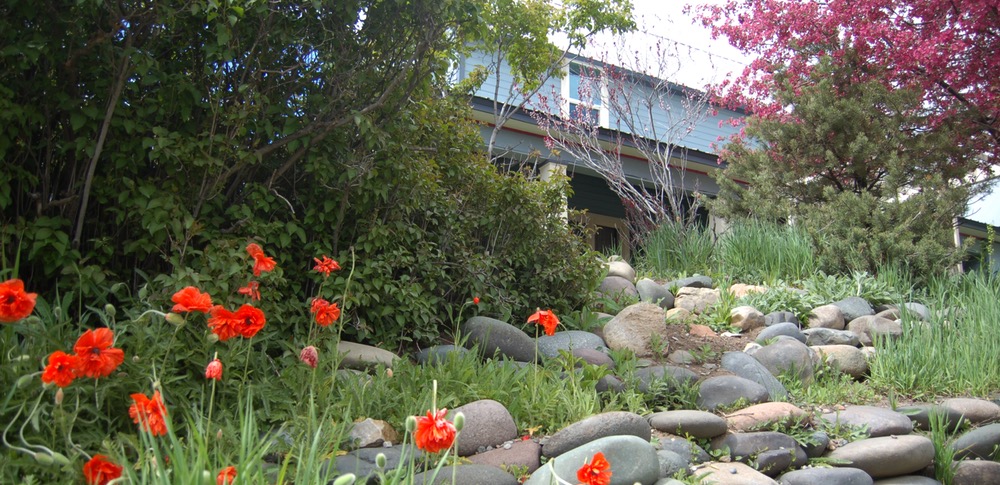Identify and designate historic landmarks and districts to ensure the preservation of Pagosa Springs’ historic character as a timber, logging and livestock town, as well as a hot springs destination and a regional economic and cultural center…
— From Pagosa Springs Town Council Ordinance 553, August 2000.
I made a comment in Part Two, on Friday, that the creation of Pagosa’s ‘Historic Preservation Board’ in 1999 has been part of an ongoing effort, on the part of the Town government, to keep Pagosa looking like… well, looking like Pagosa.
How has that worked out for us, 20 years later? And more importantly, what is Pagosa supposed to look like? Only certain buildings have been selected as historically significant, while many others have been torn down, or have fallen down on their own. Vacant lots that once accommodated older buildings are easy to find throughout our “historic” downtown — made vacant by intentional demolition, or in a few instances, by fire.
We noted that buildings the HPB considered, at one point in time, historically important — like, for example, the Archuleta County Courthouse, in 2004 — can suddenly become unimportant and suitable for demolition, when — three years later, in 2007 — the right developer comes along with the right offer.
Part of my interest in this topic admittedly comes from the fact that I live in a house built by a Civil War veteran in 1900, back when my own grandparents were not even teenagers. The house has been remodeled a few times over the ensuing 119 years to bring it, ultimately, into the 21st century. Indoor plumbing was probably one of the first improvements. The electric wiring is mostly updated, but some of the older wiring still visible in the attic looks like it might have been installed prior to 1930. A metal roof was added in the early 1990s, along with some energy-efficient windows and some blown-in insulation.
The landscaping around the house consisted of patches of weedy lawn when we bought the place in 1993. It now features numerous maturing trees, perennials, and landscaped garden areas.
The house is not what you’d call “classy” or “elegant” — more like, “simple farmhouse style.” It’s the kind of house a Civil War veteran would build with a hand saw and a hammer, back when Pagosa Springs was still a logging town and rough-cut pine was cheap and readily available.
As a result of certain upgrades and improvements, the building does not qualify as “historically accurate” in the eyes of certain people tasked with defining what constitutes an “historic landmark”. But most ordinary people probably to view the house as a cool old Victorian.

Not many cool old Victorians left in Pagosa. But there are a few.
Pagosa Springs didn’t sprout up overnight like many of the mining and railroad towns in the American West. Pagosa grew slowly, in fits and starts, over a period of several decades, and then entered a period of relative economic stagnation between 1940 and 1980. Many of the historical homes and businesses gradually fell into disrepair and were replaced by newer structures.
The downtown commercial district was originally built out of wood rather than brick, and I understand much of it burned to the ground… more than once. From a 2016 essay by John Motter published in the weekly Pagosa Springs SUN:
A major fire in 1904 ravaged about half of the town’s main business block along Pagosa Street. In truth, few of the first buildings remain in Pagosa Springs because of fires. In its early days starting in 1878, Pagosa Springs did not have the substantial brick buildings featured in the first mining boom towns such as Silverton, Ouray, Telluride and Creede. Wooden buildings and [lack of a] community water system led to the demise of many frontier communities.
As a result of historical and economic forces, Pagosa Springs bears little resemblance to historic mining towns like Durango and Telluride, nor does it resemble ski resort towns like Vail and Aspen. Pagosa looks like Pagosa, and functions like Pagosa.
So how about that Historic Preservation Board? The one that originally proposed that the Archuleta County Courthouse — built in 1928 — had historic value? And then changed its mind three years later, to encourage its demolition?
Funny you should ask…
We’ve watched a few historical controversies in downtown Pagosa over the past 15 years. At one point, the Historic Preservation Board thwarted the proposed demolition of The Pinewood Inn, a fairly run-down motel on the main drag between 1st and 2nd Street (recently purchased by a couple of energetic entrepreneurs, Annie and Tony DeMille, and extensively remodeled and upgraded to become The Nightingale Motel.) At another point, the Historic Preservation Board selected a palette of Sherwin Williams paint colors and required that all painting within the “Historic Business District” use the specified palette. Then we had the curious case of the DeVore House at 480 Lewis Street, when a neighbor applied to tear the house down to provide additional parking, and the HPB proposed so many special conditions that the neighbor walked away from the project. The house now functions as a vacation rental.
Most recently, the HPB and the Town Planning Department determined that the Town possessed an historically-significant stone arch bridge near the intersection of 1st Street and Lewis Street, adjacent to the old (also historically significant?) Water Works structure.

Historic preservation is not easy to do, in a country that puts private property rights on a pedestal, and shows little interest in older, often problematic, buildings. Unlike other cultures where tradition, history and maintenance of existing structures are highly valued, Americans are likely to tear down a 100-year-old house and go deeply into debt building something new, and not think twice about it. If it happens to be a jail built in 1990, a free-wheeling Board of County Commissioners will happily put the taxpayers $15 million in debt, to abandon the old jail as soon as it experiences a roof leak.
What’s an Historic Preservation Board to do, faced such a tear-down culture?

